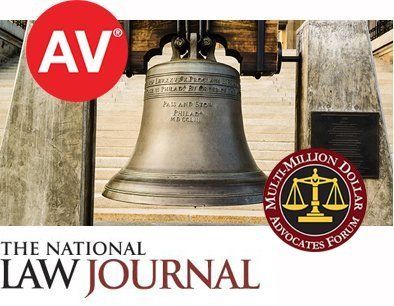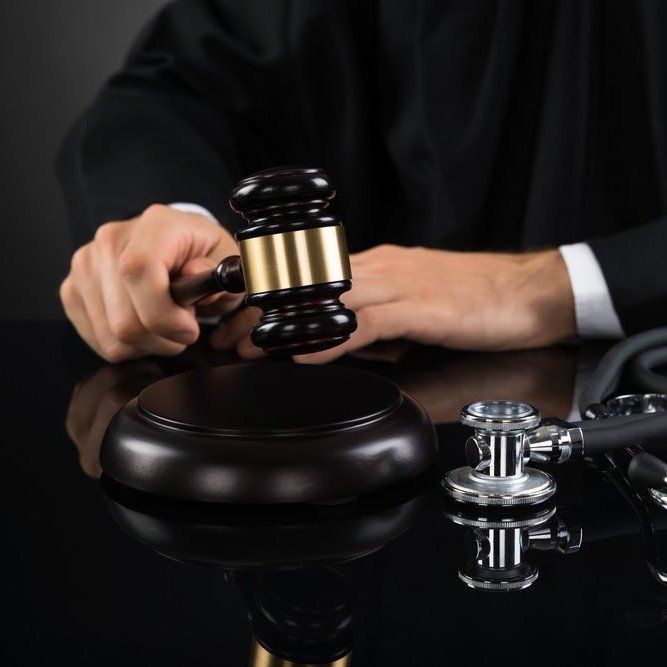Liability in Motor Vehicle Accidents Involving Pedestrians
Over the last few months, local news outlets have been peppered with stories of pedestrians being tragically struck by motor vehicles. Recent victims include a tourist killed by one of Philadelphia's popular Duck Boats and two young partygoers leaving the Made in America concert.
While the tragedies referenced above may seem like freak accidents, pedestrians are struck bymotor vehiclesmore often than one might think in Pennsylvania. According to the Pennsylvania Department of Transportation's 2014 Crash Facts and Statistics, there were 4,001 accidents involving pedestrians in 2014, 166 of which were fatal. Over 70% of these accidents occurred while the pedestrians were either crossing the street or walking and jogging alongside the street.
Pedestrians are at an obvious disadvantage in these accidents, and the risk of catastrophic injury and death is high.
Who is Responsible When a Pedestrian is Struck by a Motor Vehicle?
Generally, drivers are responsible when a pedestrian is struck in an auto accident. Our auto accident attorneys can guide you through this hardship to ensure you receive the benefits you or your loved one deserves.
Pennsylvania law grants the right of way to pedestrians. This preference is found both in statutory and case law:
5 Pa. C.S.A. § 3542 provides that pedestrians shall have the right of way when they are crossing the street within a crosswalk (whether marked or unmarked) when there are no traffic signals. 75 Pa. C.S.A. § 3547 gives pedestrians the right of way when traveling on sidewalk. Thus, vehicles exiting driveways or parking lots must yield to any pedestrians before continuing out onto the road. Additionally, a voluminous number of cases, most notably Smith v. Pittman 152 A.2d 470 (1959), Pensakv. Peerless Oil Co., 166 A. 792 (1933) and Giles v. Bennett, 148 A. 90(1929) have held that pedestrians enjoy the right of way when lawfully crossing the street and that they have a reasonable expectation that drivers will operate their vehicles safely and do their best to avoid mowing down pedestrians.
Given the support Pennsylvania law affords pedestrians and the immense harm which a pedestrian may incur during an accident, it would seem that the driver is liable for harm in such cases. This is generally true, especially when the pedestrian is lawfully crossing the street and obeying all state and local traffic ordinances.
However, like most things in law and in life, determining liability in such accidents is not always so simple. An auto accident attorney can help determine who is liable in these tragedies. While the law certainly weighs in favor of pedestrians, it expects them to use some common sense when crossing the street:
-Pedestrians are generally required to take current traffic conditions into account while crossing the street. That is, you cannot cross the street without regard to any known or reasonably anticipated dangers presented by oncoming traffic.
-Pedestrians also cannot always claim blind reliance on a traffic signal. If you have a green light and begin to cross despite the vehicle which is traveling toward you at a high rate of speed, the law may deem you partially responsible for an accident.
-Pedestrians are also required to follow any state and local rules enacted for their safety. Thus, jaywalking, running out from behind parked cars and walking onto busy highways without sidewalks are all acts which may reduce the driver's liability.
A brief review of the local news reports on traffic accidents involving pedestrians will show that most of them are complicated. It is not often that attorneys see accidents involving unsuspecting pedestrians were lawfully crossing the street and meeting every expectation when they were suddenly run down by a motorist breaking every law on the books. More often, the facts must be carefully collected and analyzed to decide each party's relative contribution to the accident.
Even if the pedestrian is partially at fault, there is still hope of recovery. Pennsylvania has recently adopted the comparative negligence standard, which simply means that the courts determine the percentage of each person's negligence in a given case. For example, if you were crossing the street lawfully and relying on a green light, but were not paying attention because you were focused on that favorite tune playing on your iPhone, it is possible a jury could find you 20 or 30% liable while finding the driver 80 or 70% liable. In either case, you would still be able to collect a large percentage of your damages from the driver.
You Need an Experienced Attorney
Determining liability for traffic accidents involving pedestrians can be incredibly complicated. If you or someone you know was hit by a motor vehicle while crossing the street or jogging, you need a skilled auto accident attorney to help you determine the extent to which each party was at fault.
At the Law Office of Alvin F. de Levie & Associates, we have decades of experience in trying complex cases. We have handled cases from Philadelphia and the surrounding counties to Centre County, Clearfield County, and Allegheny County. If you have suffered an injury from an accident, contact us – 24 hours a day, 7 days a week – at (844) 777-2529 for a consultation.






























